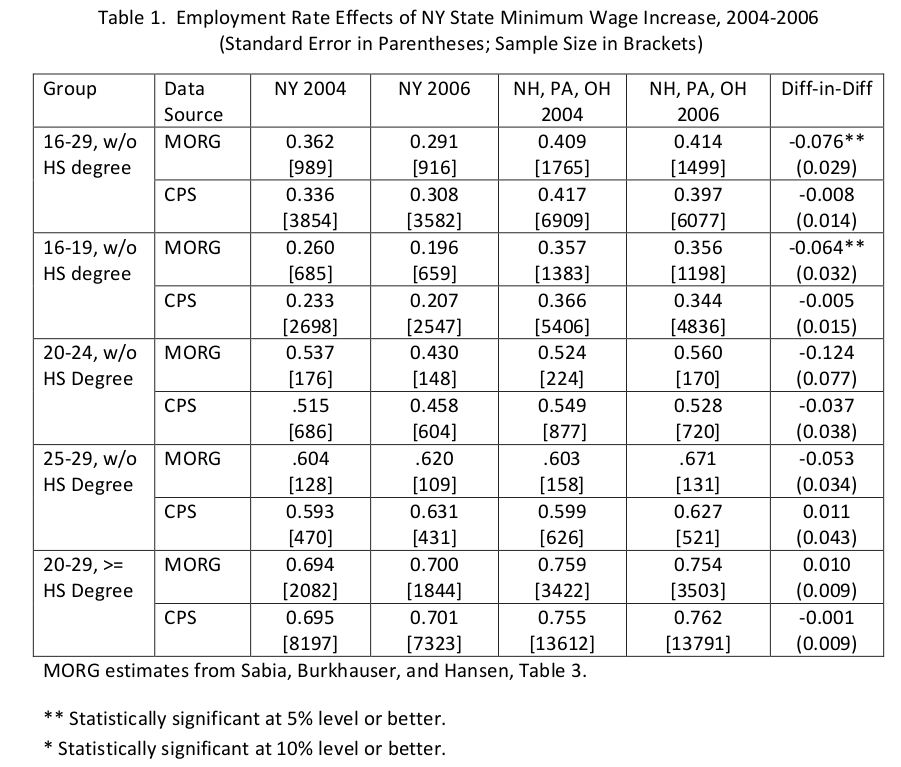January 29, 2014
But, a new working paper by University of Delaware economist Saul Hoffman suggests that Sabia, Burkhauser, and Hansen’s (SBH) results were an artifact of the relatively small dataset they used to perform their analysis. When Hoffman uses a much larger version of the same data, he finds “no evidence whatsoever of a negative employment impact.”
The problem with the SBH analysis of the employment effects is that it relies entirely on a subsample of the government’s monthly Current Population Survey (CPS), not the full sample. That subsample –the Merged Outgoing Rotation Group (MORG), which is one-fourth of the full CPS– is widely used and, for most purposes, gives results that are very similar to the full sample.
In this case, however, SBH were unlucky. For every group of workers (different slices of 16-to-29 year-olds with less than a high school degree) where SBH found employment losses in the MORG sample in response to the higher minimum wage, Hoffman found no employment change (economically small and statistically insignificant changes in employment) in the full CPS.
As Hoffman explains, SBH “were not inherently wrong in using the MORG files.” They did so because the MORG data –unlike the Basic CPS– has detailed information on workers’ wages. But, as Hoffman points out, if the MORG and Basic CPS give different results for employment, a variable that is available in both data sets, then “there can be no doubt that the full CPS…is the appropriate one to rely on.” (p. 16)
To give you a feel for Hoffman’s findings, here is one of the key tables in his paper. The main column of interest is the last one, where he shows the “difference-in-difference” results, based on how employment in New York state compared before and after the minimum-wage increase (the first “difference”), relative to how employment changed in nearby New Hampshire, Pennsylvania, and Ohio, where the minimum wage was constant (the second “difference”). For each demographic group, the first row shows the SBH findings, based on the MORG and the second rows shows Hoffman’s findings using the full CPS.
For 16-to-29 year olds without a high school degree, SBH estimated that the increase in New York’s minimum wage lowered employment 7.6 percentage points. By contrast, using the full CPS, Hoffman found only a negligible decline (-0.8 percentage points) that was not statistically significantly different from zero. A similar pattern held when the analysis was limited to 16-to-19 year-olds without a high school degree: the 6.4 percentage-point decline in employment in the MORG becomes a statistically insignificant -0.5 percentage-point change in the full CPS.
You can see the full set of results here.







